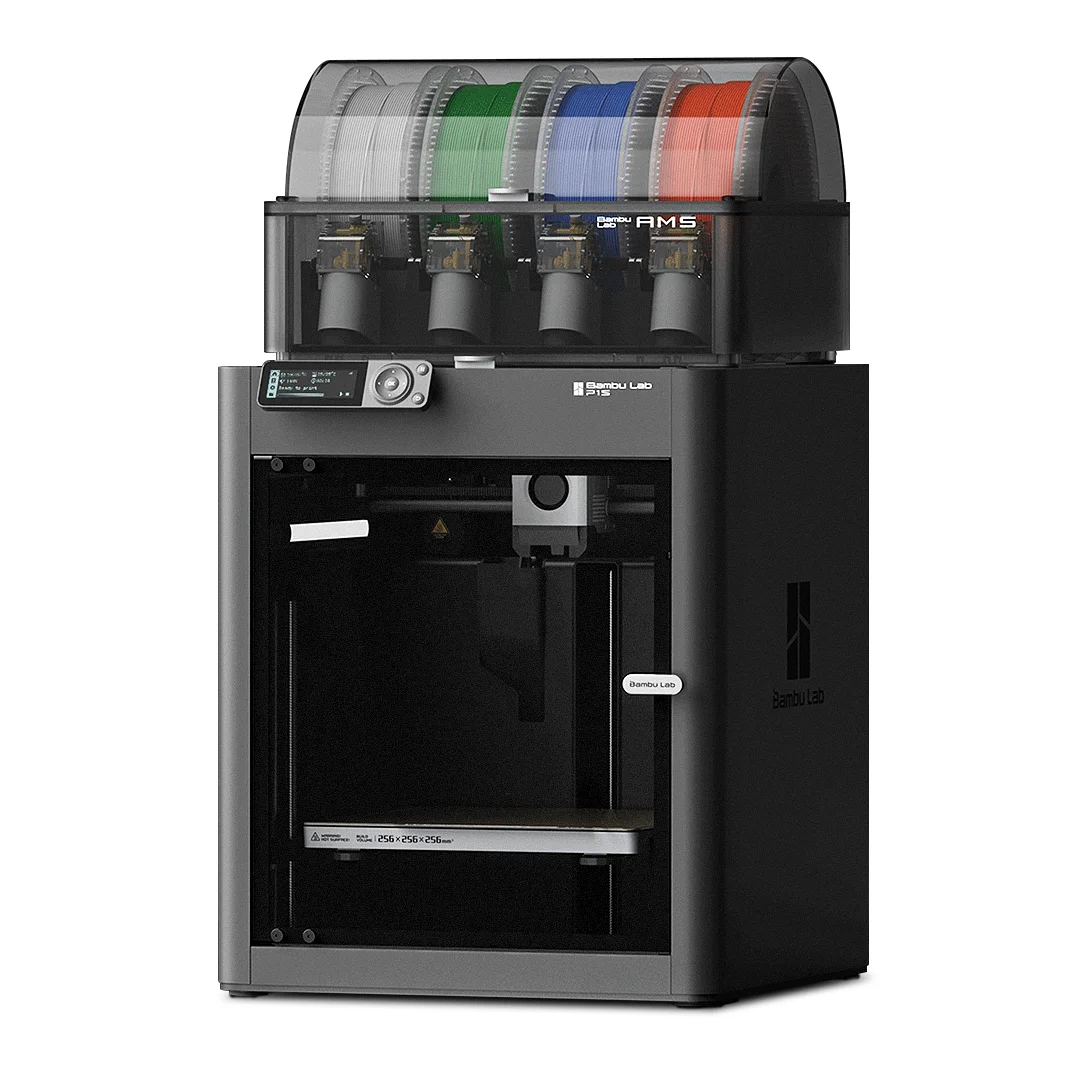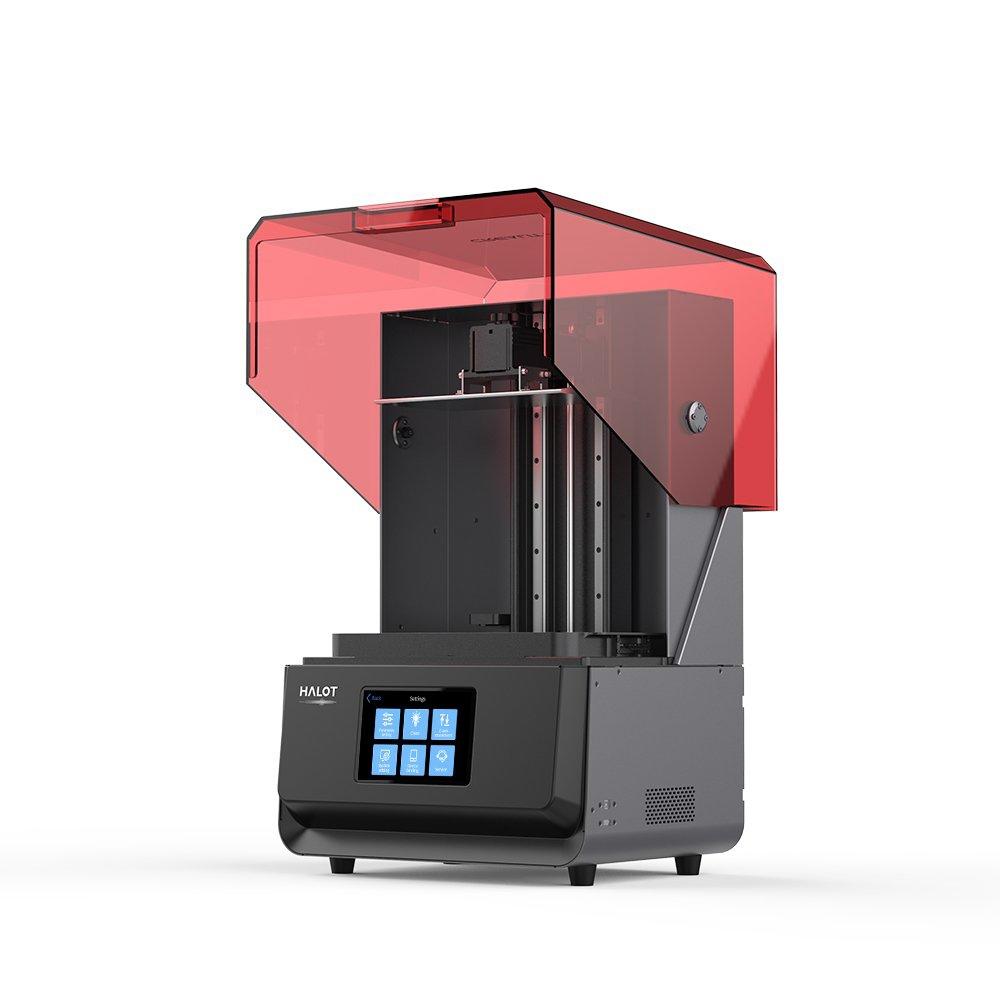Compare P1S vs Halot Max
Comparison between the best 3D printers
Choose the best 3D printer at the best price. The cheapest 3D printers are here.
Buy a 3D printer here with 3D Fila.
 |
 |
|
| Model | P1S[BUY P1S] |
Halot Max[BUY Halot Max] |
| Printing Material | Filament | Resin |
| Buy Filament for Bambu Lab P1S | Buy Resin forCreality 3D Halot Max | |
| Estimated price | $949,00 | $3000,00 |
| Manufacturer | Bambu Lab | Creality 3D |
| Release Year | 2023 | 2021 |
| Print Volume [mm] | 256x256x256 | 293x165x300 |
| Printer Size [mm] | 389x389x458 | 480x387x770 |
| Weight [kg] | 12,95 | 32,5 |
| Power Loss Recovery | YES | NO |
| Maximum Resolution [mm] | 0,1 | 0,03 |
| Processor | Quad ARM A7 1.2 GHz | |
| Display | Touchscreen 5'' | Display touchscreen 5'' |
| Power Supply | 350 W | |
| Connectivity | Wifi, Bambu bus, Cartão SD | SD / USB / Wi-Fi |
| Operating systems | Windows, Linux, Macbook | Windows, Mac, Linux |
| Date of registration in the system | 2024-04-11 | 2022-11-04 |
| Release date | 2023 | 2021 |
| Extra features | The Bambu Lab P1S stands out for its out-of-the-box practicality, eliminating the need for manual adjustments with automatic calibrations such as bed leveling and vibration compensation. It features multicolor printing capability through the AMS system, allowing up to 16 colors when connecting four AMS units. With an advanced control algorithm, the P1S offers fast printing speeds without sacrificing quality. Equipped with modern features such as filament end sensor, semi-automatic belt tension, direct extruder, welded frame and all-metal hotend, along with a fully enclosed chamber, the P1S promotes a superior printing experience, supporting a wide range of materials. | The Halot Max printer stands out for its large print size (293 x 165 x 300 mm) and uses SLA technology. It has an integral light source for improved accuracy and a strong core with an advanced operating system. Its Z-axis module ensures high precision, supported by efficient slicing software. The machine offers online OTA updates and boasts an adjustable layer thickness between 10 and 200 microns. Its XY-axis resolution is 3840*2160, with 0.05 mm accuracy, and an integral 405nm light source. The printer includes a 5" touchscreen and multiple connectivity options, such as USB, Creality Cloud, and HALOT BOX WiFi. With cutting-edge technology, the Halot Max is ideal for printing small models with uniform precision, thanks to its self-developed lighting system and stable printing mechanism, which includes dual linear guides, ball screws, and an intelligent brake system. |
| Support for multiple colors and materials (AMS and CFS) | YES | NO |
Notes * |
||
| Cost-benefit | 7 / 10 | 5 / 10 |
| Hardware | 6.4 / 10 | 1.2 / 10 |
| Tela | . | . |
| Print volume | 4 / 10 | 3 / 10 |
| Performance | 4 / 10 | 9 / 10 |
| [BUY P1S] | [BUY Halot Max] |
Conclusion |
| In concluding the comparison between the Bambu Lab P1S and the Creality 3D Halot Max, several key factors emerge that can inform a consumer’s decision. The Bambu Lab P1S offers impressive practicality and user-friendliness, emphasizing automated features that facilitate hassle-free setup and operation. It supports multicolor printing and a range of materials, catering to enthusiasts looking for versatility and ease of use. Its relatively compact design, lighter weight, and advanced connectivity options further enhance its appeal for home users or small businesses. The P1S also provides solid performance at a competitive price point. On the other hand, the Creality 3D Halot Max excels in print size and resolution, leveraging SLA technology to achieve remarkable accuracy and detail. Its larger print volume and precision make it particularly suitable for professional applications where fine details are paramount. However, it comes with significant compromises in cost and overall weight, making it less accessible for casual users or those with budget constraints. In summary, the decision between the two ultimately hinges on the specific needs of the user. The P1S shines in versatility, ease of use, and cost-effectiveness, while the Halot Max appeals to those willing to invest more for superior detail and larger prints. Therefore, potential buyers must evaluate their printing needs against the strengths and weaknesses of each model to determine which printer aligns best with their priorities. |

